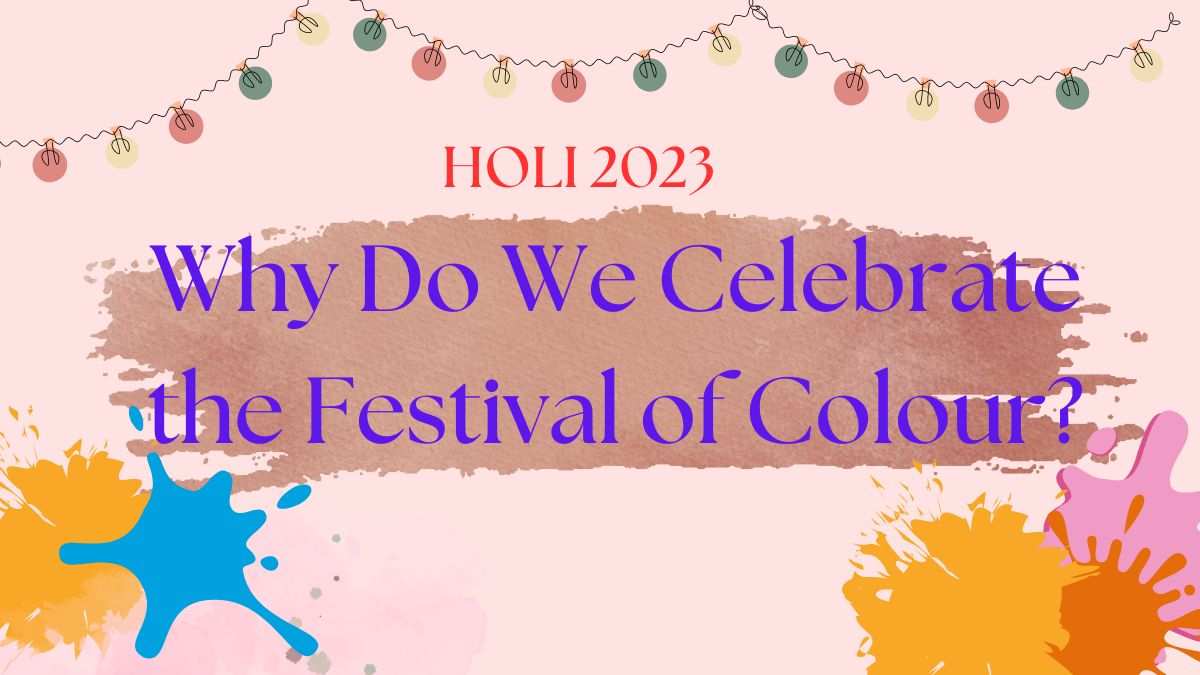Hindus have a long-revered tradition known as Holi. It is a national holiday in India and Nepal and a regional holiday in other nations. This widely observed festival honors the divine and enduring love of Lord Radha Krishna. The day also celebrates Lord Vishnu’s victory over Hiranyakashipu in his role as Narasimha Narayana, which means the victory of good over evil.
When is Rangwali Holi 2023? Check out Shubh Muhrat and more
The festival has several purposes, but primarily honors the arrival of spring. It was described as a festival in 17th century literature that honored agriculture and remembered prosperous lands and good spring harvests. According to Hinduism, it is a time to embrace the vibrant colors of spring and say goodbye to winter. This year’s festival of color celebration schedule is as follows:
Rangwali Holi 2023 Date: March 8, 2023 (Wednesday)
Rangwali Holi 2023 Time: March 8, 2023 (all day)
Holika Dahan 2023 Date: March 7, 2023 (Tuesday)
Holika Dahan 2023 Time: 6:24 pm- 8:51 pm
Holika Dahan 2023: Date, Shubh Muhurat, Rituals, History and Meaning
Why do we celebrate Holi?
Holi marks the beginning of Indian summer, the end of winter and the blossoming of love. The festival also serves as an invocation to a prosperous spring harvest. It begins on the evening of Purnima (Full Moon Day), which falls in the Hindu calendar month Phalguna, which corresponds to mid-March in the Gregorian calendar. It lasts a night and a day. Holika Dahan or Chhoti Holi is the name given to the first night, and Holi, Rangwali Holi, Dol Purnima, Dhulandi, Ukuli, Manjal Kuli, Yaosang, Shigmo, Phagwah or Jajiri is the name given to the second day of celebration.
What is the story behind Holi?
The Holi festival has cultural significance among various Hindu traditions of the Indian subcontinent. Below are some of the examples from the story to understand the cultural and religious significance:
Radha and Krishna
The Puranic text known as Garga Samhita, written by Sage Garga, is the first literary work to refer to the romantic depiction of Radha and Krishna playing Holi. The festival is also explained by a well-known symbolic legend. Krishna was worried that Radha, who has light skin, would not like him because of his dark skin. Yashoda, her mother, who had grown tired of her pleading, ordered her to approach Radha and ask her to paint her face in whatever color she desired. And this act of love brought about the union of Radha and Krishna.
Since then, the playful color of Radha and Krishna’s faces has been commemorated as Holi. Also, this is the reason why we celebrate Holi with colors.
Happy Holi 2023: Wishes, Quotes, Messages, SMS, WhatsApp and Facebook Status, Poems and More
Lord Vishnu
According to a legend found in chapter 7 of the Bhagavata Purana, King Hiranyakashipu, the father of Prahlada, was the ruler of the evil Asuras. He had obtained a boon that gave him five unique abilities: he could not be killed by humans or animals, nor could he be killed by astra (projectile weapons), nor by any shastra (hand weapons), nor by being on land, in water or in the air. Hiranyakashipu became arrogant, believed himself to be God and insisted that everyone worship only him. However, Prahlada, Hiranyakashipu’s own son, did not agree and remained committed to Lord Vishnu. Hiranyakashipu became enraged at this. He subjected Prahlada to cruel punishments, but none of them had any effect on the young man or his determination to defend his moral convictions. Finally, Prahlada’s evil aunt Holika tricked him into sitting with her on a pyre. Holika was protected from fire damage by a cloak she wore, but Prahlada was not. But later, Holika’s cloak flew from her as the flames burned, enveloping Prahlada, who lived while Holika perished.
To represent the triumph of good over evil, Prahlada’s victory over Hiranyakashipu and the fire that destroyed Holika, the Holika bonfire is lit before the celebration.
Kama and Rati
The legendary meaning of Holi is connected to Shiva in yoga and intense meditation, among other Hindu traditions such as Shaivism and Shaktism. In Vasant Panchami, goddess Parvati enlisted the help of Kamadeva, a Hindu god of love, in her quest to bring Shiva back to the world. The yogi opens his third eye and reduces Kama to ashes while the god of love shoots arrows at Shiva. This upsets both Kama’s wife, Rati (Kamadevi), and his own wife, Parvati. Shiva recognizes Rati’s forty-day asceticism in her meditation, forgives her out of compassion, and restores the god of love as a result. And that is why the 40th day after the Vasant Panchami festival is when Holi is celebrated in honor of the return of the god of love.
Essay on Holi 2023 for kids and students in English, easy and simple with 10 lines
Holi was celebrated with such fervor in Mughal India that members of all castes were allowed to color the Emperor. In addition to that, Sikhs have historically observed the festival, at least until the 19th century, and in historical texts it is known as Hello; There are also historical traces of Jains participating in the festival. The Holi festival is considered an opportunity to improve relationships with others, resolve conflicts and purge emotional impurities.
Check important days and dates in February 2023
Categories: Optical Illusion
Source: sef.edu.vn
